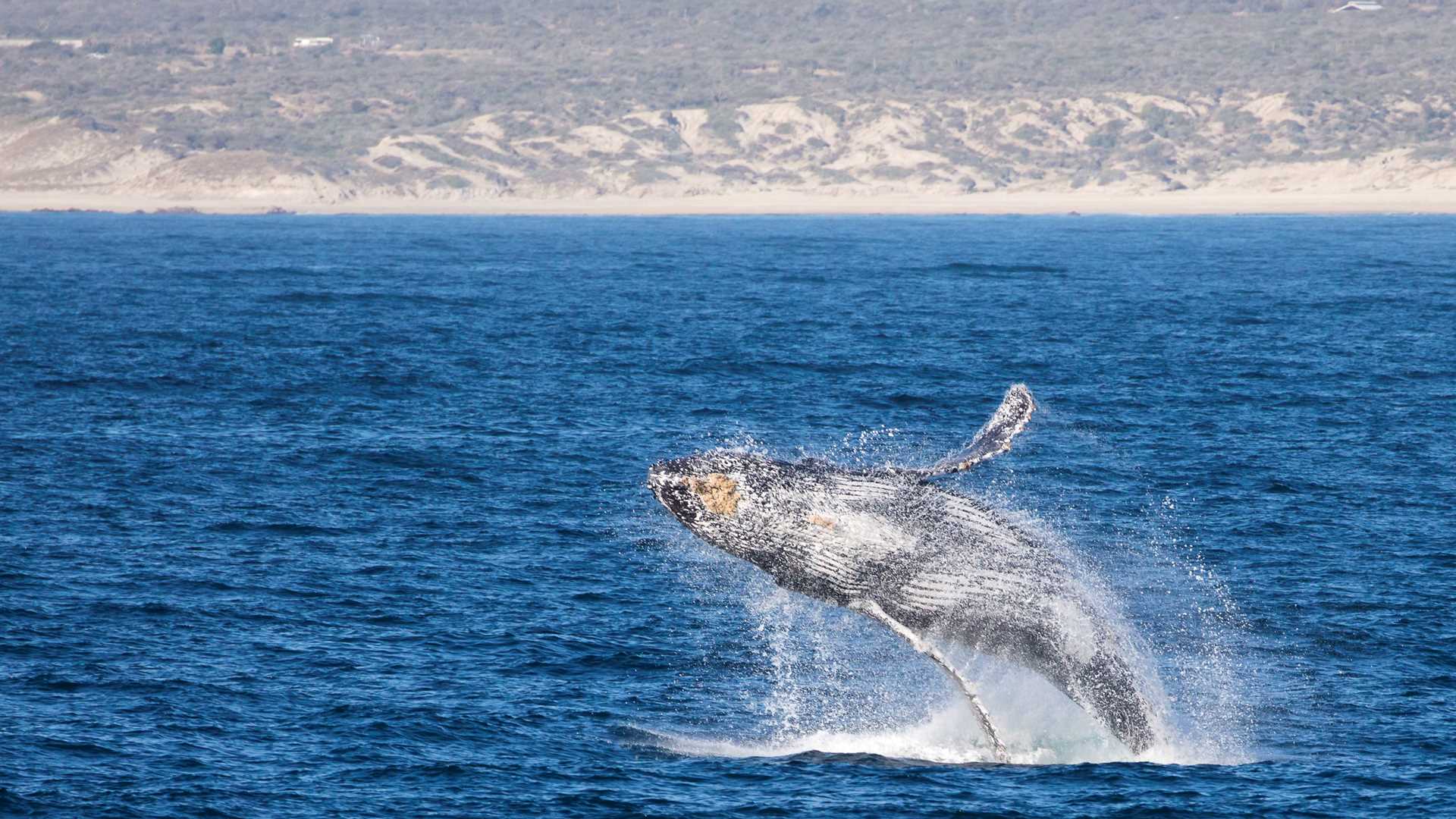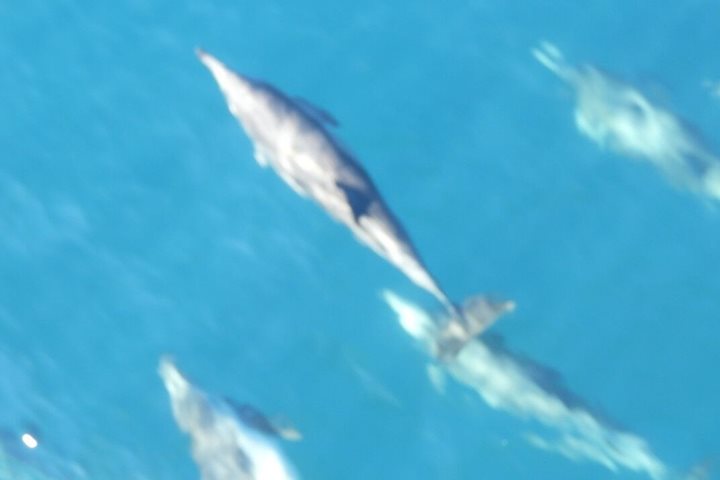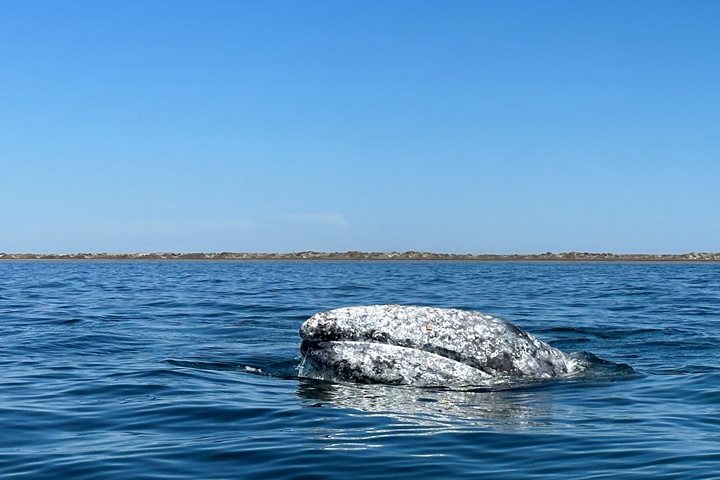National Geographic Venture saw the first rays of sun south of the Tropic of Cancer. The highly humid atmosphere caused a lightly hazy horizon, which prevented us from seeing the green flash. It was a beautiful sunrise anyhow. Almost immediately, we began seeing the first of many humpback whale blows. We saw these throughout the day. The waters of the southernmost part of the Baja California Peninsula are one of the main breeding grounds of humpback whales in the entire North Pacific Ocean. We saw ample proof of this statement today. We spent pretty much the entire day watching individual whales or groups of whales engaged in interesting and intriguing behaviors. The species' winter breeding areas are known for the abundance and exuberance of the groups of males that compete to win the females’ favor. Today, we watched many males swim close together, slapping each other with their flukes or pectoral flippers. We also watched whales doing spectacular breaches in all directions around the ship. The whole region was full of life!
As spectacular as humpback whales are, we redirected our attention to a different species when several bottlenose dolphins joined National Geographic Venture. The dolphins followed us for a long time. Some of them performed amazing jumps high in the air and several enjoyed riding the pressure wave that formed in front of the moving ship's bow. They were still entertaining us when lunch was announced, and hunger won the battle over wildlife watching.
We arrived to Land's End in time to see the sunset by the world famous granitic arch that symbolizes Cabo San Lucas. The air was clear and the atmosphere cleaner than in the morning. We had the pleasure of observing and photographing the green flash; in fact, the flash even showed violet margins! What a spectacular end to a thoroughly enjoyable day!







